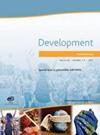VitelloTag:将货物高通量送入卵母细胞的工具。
IF 3.7
2区 生物学
Q1 DEVELOPMENTAL BIOLOGY
引用次数: 0
摘要
将分子工具注入卵母细胞对发育和生殖生物学至关重要。传统的显微注射方法需要大量设备,往往具有技术挑战性,而且产量低,对于卵母细胞脆弱或产卵季节受限的物种来说不切实际。为了克服这些局限性,我们开发了 VitelloTag,这是一种经济高效的高通量系统,使用卵黄素衍生的融合蛋白,通过受体介导的内吞作用实现高效的货物递送。我们将 Cas9/sgRNA 复合物递送到两个远缘物种中进行基因敲除,从而证明了该系统的实用性。本文章由计算机程序翻译,如有差异,请以英文原文为准。
VitelloTag: a tool for high-throughput cargo delivery into oocytes.
Delivering molecular tools into oocytes is essential for developmental and reproductive biology. Microinjection, the conventional method, is equipment intensive, often technically challenging and has a low yield, and is impractical in species with delicate oocytes or restricted spawning seasons. To overcome these limitations, we developed VitelloTag, a cost-effective, high-throughput system using vitellogenin-derived fusion proteins to enable efficient cargo delivery via receptor-mediated endocytosis. We demonstrate its utility by delivering Cas9/sgRNA complexes in two distantly related species for gene knockout.
求助全文
通过发布文献求助,成功后即可免费获取论文全文。
去求助
来源期刊

Development
生物-发育生物学
CiteScore
6.70
自引率
4.30%
发文量
433
审稿时长
3 months
期刊介绍:
Development’s scope covers all aspects of plant and animal development, including stem cell biology and regeneration. The single most important criterion for acceptance in Development is scientific excellence. Research papers (articles and reports) should therefore pose and test a significant hypothesis or address a significant question, and should provide novel perspectives that advance our understanding of development. We also encourage submission of papers that use computational methods or mathematical models to obtain significant new insights into developmental biology topics. Manuscripts that are descriptive in nature will be considered only when they lay important groundwork for a field and/or provide novel resources for understanding developmental processes of broad interest to the community.
Development includes a Techniques and Resources section for the publication of new methods, datasets, and other types of resources. Papers describing new techniques should include a proof-of-principle demonstration that the technique is valuable to the developmental biology community; they need not include in-depth follow-up analysis. The technique must be described in sufficient detail to be easily replicated by other investigators. Development will also consider protocol-type papers of exceptional interest to the community. We welcome submission of Resource papers, for example those reporting new databases, systems-level datasets, or genetic resources of major value to the developmental biology community. For all papers, the data or resource described must be made available to the community with minimal restrictions upon publication.
To aid navigability, Development has dedicated sections of the journal to stem cells & regeneration and to human development. The criteria for acceptance into these sections is identical to those outlined above. Authors and editors are encouraged to nominate appropriate manuscripts for inclusion in one of these sections.
 求助内容:
求助内容: 应助结果提醒方式:
应助结果提醒方式:


